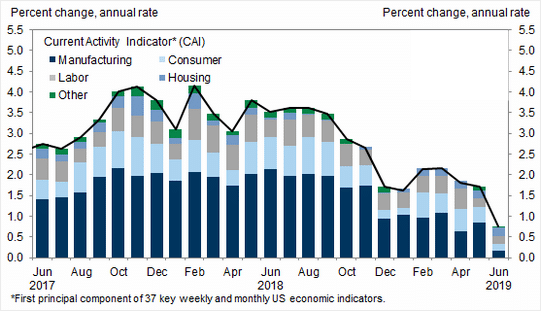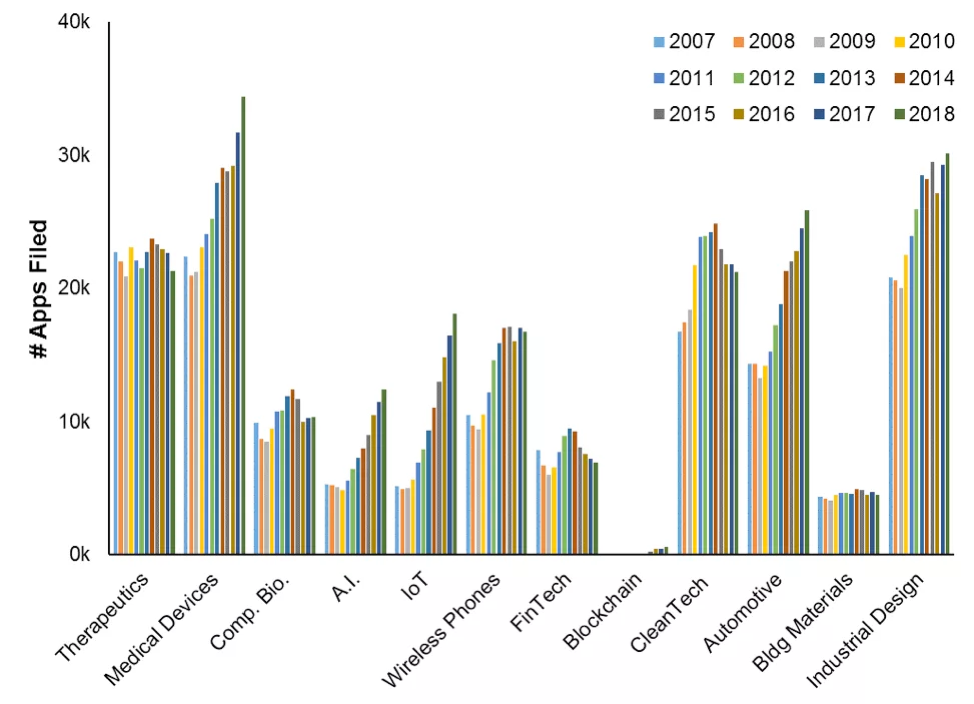How Innovation and IP analysis can help a business navigate through economic slowdown
“Each problem has hidden in it an opportunity so powerful that it literally dwarfs the problem. The greatest success stories were created by people who recognized a problem a turned it into an opportunity.”
– Joseph Sugarman
Source: PeerIQ, Goldman Sachs
Humanity is going through a major phase of evolution as it grapples with the changing climate and challenging economic environment. Often, organizations respond to downturns by employee retrenchment, reducing R&D investments and instead focusing only on short-term priorities. But a challenging economic environment also highlights the need for sustainable technological innovations.
Recession should be taken as a period of economic housekeeping; to discard the unnecessary and to focus on what will be important in future. Innovation is essential for organizations to achieve their long-term growth objectives. It becomes even more critical when economy is beginning to slow down and markets all over the world are showing signs of negative growth. Economic uncertainty makes consumers more selective about their purchase decisions; as a result, businesses are challenged by constant disruption and a fast-changing economy. Market constraints and global uncertainties are forcing companies to change and adapt faster, invest more effort in upgrading skills and how to process acquired knowledge into innovative solutions.
It becomes imperative for companies to approach innovation in a strategic and predictive way because the margin for error decreases as times get tough. Developers of new product need to consider the complete product life cycle and carbon foot print at the ideation stage itself. With a strategic innovation plan, the company can develop a three hundred sixty degree vision about what would be sustainable and what needs to be divested off. Effective innovation roadmap for new technology products can be achieved by monitoring trends of technology diffusion and interest diffusion over a longer period. Technology diffusion and interest diffusion can be measured by the volume of patent citations and web search traffic, respectively.
Figure 1 Patenting trends of different domains in last ten years (Source: IPWatchdog)
While technology diffusion, as represented by patent citations, can explain long-term sales for tech solutions, interest diffusion, as represented by web search traffic, can help to improve the short-term predictability of market. It can be clearly seen in Figure 1 that the number of patent applications showed a dip during the last major recession (2008-09) across all major domains except Clean Tech. While domains like AI, IoT and Medical Devices have registered a steady growth after that, FinTech has shown decline. Domain specific analysis of patenting trends augmented by market analysis can give extremely accurate insights on future course to be taken by any major business.
The 2018 WIPO Indicators report analyses data provided by regional and national IP offices show that the top five patent offices CNIPA (China), USPTO (United States), JPO (Japan), KIPO (Korea) and EPO (Europe) accounted for 84.5% of the world’s total patent filings in 2017, up from 75.2% in 2007. Germany and France are strongest in transport; China and the Republic of Korea in electrical machinery and computer technology; Japan in electrical machinery; Switzerland and the UK in pharmaceuticals; the Netherlands in medical technology; the Russian Federation in food chemistry; and the US in computer technology. Electrical engineering and chemistry are the leading categories cited in patent applications. Deeper analysis shows that computer technology is the most frequently featured technology, followed by: electrical machinery, digital communication, measurement technology and medical technology. These five groups account for 28.9% of all published applications worldwide. Food chemistry, material and metallurgy, and digital communication experienced the fastest growth of the top 20 technologies between 2006 and 2016.
Currently, the semiconductors industry is slowing down in US due to high reliance on consumer electronics. Europe is also not completely immune due to slowdown in automobile sector and sluggish manufacturing growth. However, solid-state battery technology used in electric vehicles can be a promising alternative to Lithium-ion battery technology and can be a key driver in growth of semiconductor industry. Patent analytics tool like PCS from Dolcera (Table 1 and 2) show a considerable patent filing activity in semiconductor based solid-state battery technology across the top five patent offices. It can also be seen that during the same period the filing activity in Lithium ion battery for electric vehicles is getting saturated.
Table 1 Patent Filing trends – Comparison on PCS (AI enabled Analytics tool from Dolcera)
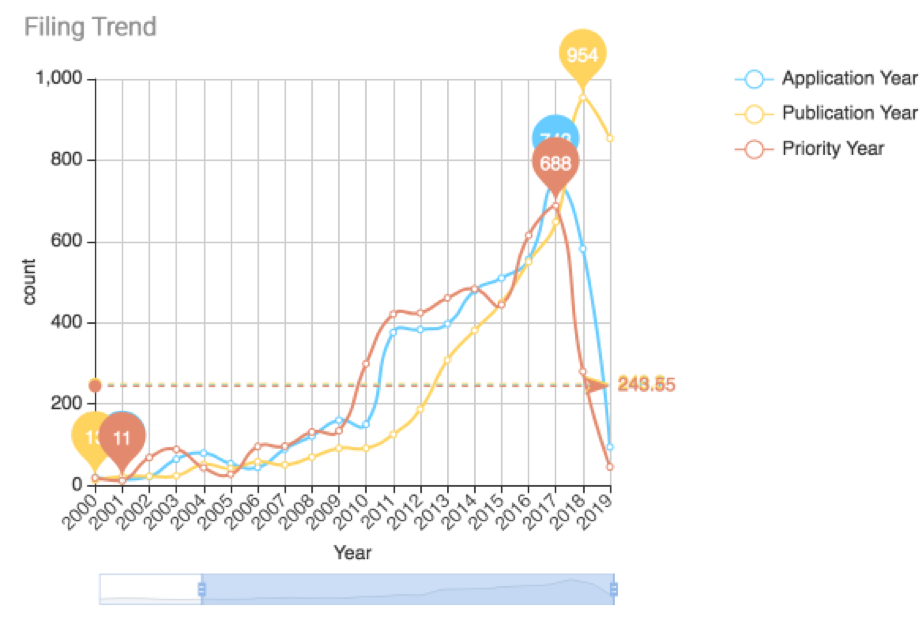 |
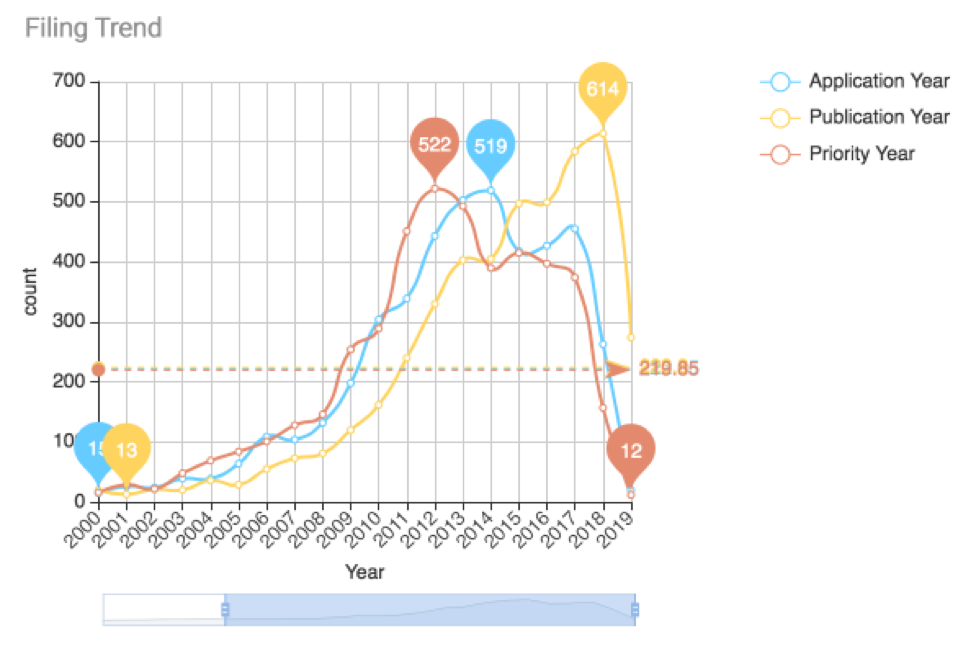 |
Table 2 Key players – Comparison on PCS (AI enabled Analytics tool from Dolcera)
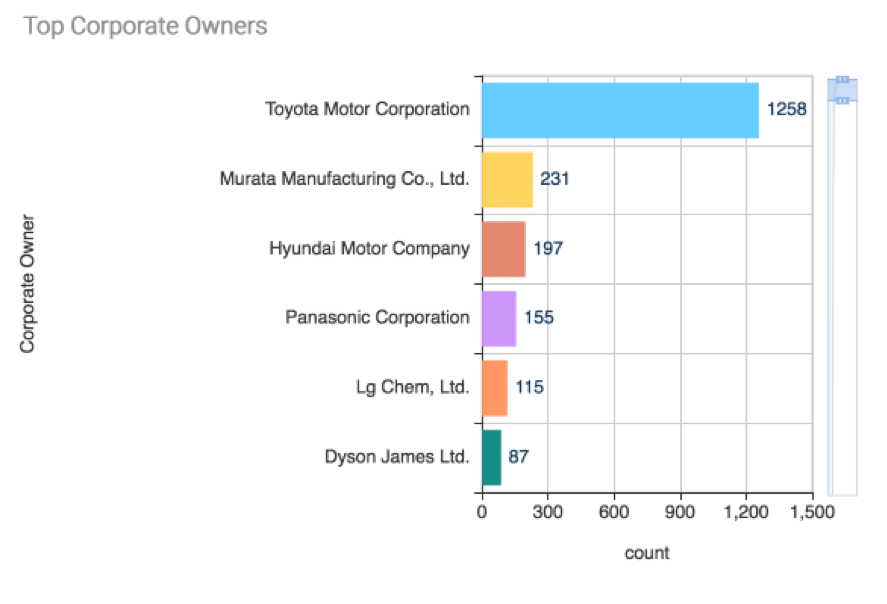 |
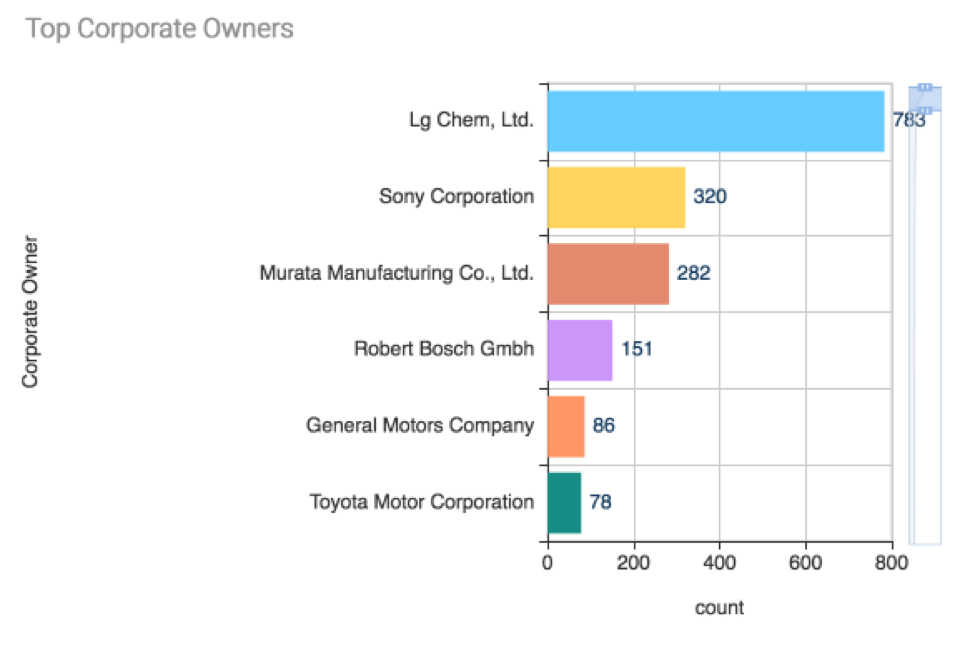 |
Apart from getting insights into the future market, IP services can be used to enhance awareness about competitor’s R&D focus and prevent a business from reinventing the wheel and use license instead. IP Licensing enables the parent company to monetize an innovative solution without the development cost so that each business can focus on its core competency and increase productivity. Existing patents can be analyzed by domain experts for alternative implementation in adjacent technology areas thus leading to disruptive innovation. Services like prior art search can help a business to avoid litigation cost in future and enhance the scope of invention. Patentability searches can help inventors to bridge the gap between their version of invention and legally acceptable patent document. Thus, services provided by IP consulting firms can enable streamlining of the complete innovation process across all domains and assist businesses in balanced allocation of resources for long-term growth. The differentiating factor for a successful business during slowdown will be to discover opportunity disguised as a problem and commercialize it. After all, it’s a matter of perception – some consider innovation to be disruptive and others see innovation as the driver of humanity.


 中文
中文